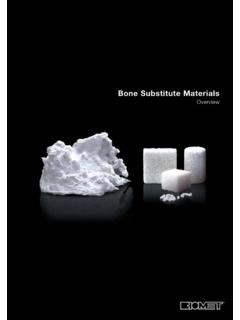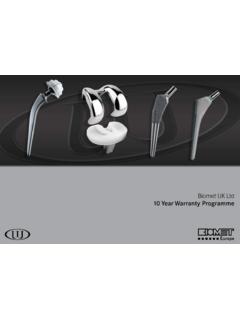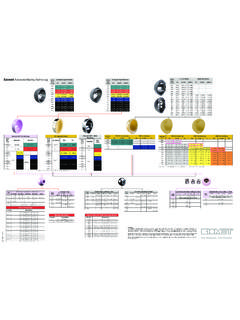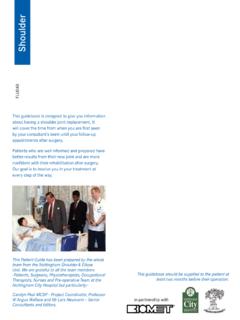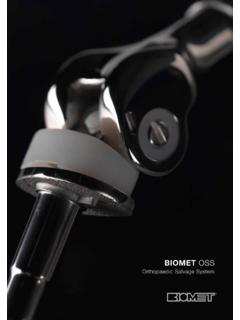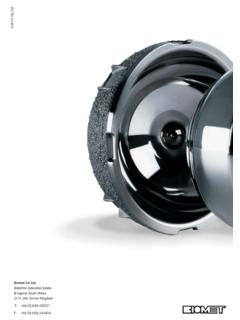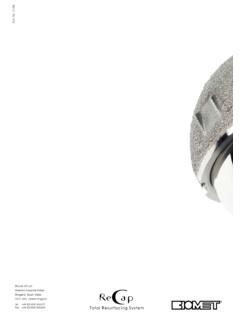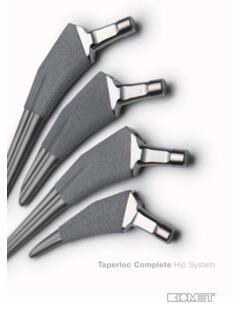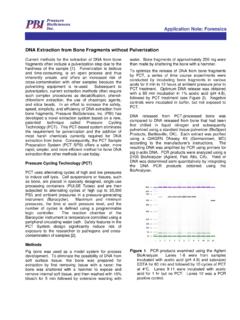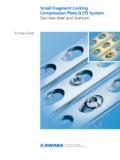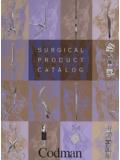Transcription of Anterior Cruciate Ligament Reconstruction Using …
1 Anterior Cruciate Ligament Reconstruction Using the Howell 65 Tibial Guide and the bone -Patellar Tendon- bone Instrument Set TunneLoc . Interference Screws Tapered for easier starts and straighter tracking Less aggressive middle threads reduce the possibility of graft damage Designed to reduce bone plug migration during placement Gentle Threads . Resorbable Interference Screws Blunt thread design assists in protecting ACL graft Driver design evenly distributes torque throughout the entire screw to prevent breakage or stripping Made of clinically proven LactoSorb . copolymer Howell 65 . Tibial Guide Properly places tibial tunnel allowing the ACL graft to replicate the tension pattern of the native ACL.
2 Keys off of intercondylar roof which prevents roof impingement and the need for a roofplasty Wide tip aids in the prevention of PCL impingement bone -Patellar Tendon- bone Instrument Set The Arthrotek bone -Patellar Tendon- bone Instrument Set is designed to simplify arthroscopic Anterior Cruciate Ligament reconstructions. Using the bone Cutting Templates in conjunction with the bone Crimpers allows for consistent graft harvest and preparation. The Howell 65 Tibial Guide and the Size-Specific Femoral Aimers take the guesswork out of tunnel placement. Fixation with either TunneLoc Interference Screws or Gentle Threads Interference Screws gives the surgeon a variety of options from which to choose with superior fixation.
3 S U R G I C A L T E C H N I Q U E. Figure 1 Figure 2a Figure 3. Figure 2b Harvest the bone -Patellar Tendon- bone (BTB) Graft Flex the knee and make a longitudinal incision 1cm with the tendon graft on the middle third of the patella medial to the midline from the inferior pole of the with two guide pins (Figures 2a & b). Use an oscillating patella to the distal end of the tibial tubercle. Extend the saw to cut the patella bone plug 9 10mm wide, knee and use the patella resector to move the incision 25 30mm long and 10mm thick (Figure 3) and remove proximal and expose the patella for harvesting the bone the bone cutting template. plug (Figure 1). Pin the bone cutting template in line This brochure is presented to demonstrate the surgical technique utilized by Omar Darr, , Milwaukee, Wisconsin.
4 Arthrotek, as the manufacturer of this device, does not practice medicine and does not recommend this or any other surgical technique for use on a specific patient. The surgeon who performs any procedure is responsible for determining and utilizing the appropriate techniques for such procedure for each individual patient. Arthrotek is not responsible for selection of the appropriate surgical technique to be utilized for an individual patient. Figure 4. Figure 7a Figure 5 Figure 6 Figure 7b Flex the knee and use a retractor to move the incision portion of the patella bone block to the proximal end distal and expose the tibial tubercle for harvesting the of the tibial bone block (Figure 5).
5 Pry and then remove bone plug. Pin the bone cutting template in line with the bone plug from their harvest site with an osteotome the tendon graft on the middle third of the tibia with (Figure 6). Trim the bone plugs with a ronguer into two guide pins. Use an oscillating saw to cut a tibial trapezoidal shapes. Squeeze the bone blocks in the bone plug 9 10mm wide, 25 30mm long and 10mm bone crimper, ensuring that the notch is placed in the thick (Figure 4). Remove the bone cutting template. cancellous portion of the plug (Figures 7a & b). Save the Flex the knee and incise the medial lateral border of bone remnants for grafting the patellar defect. the central third of the patellar tendon from the distal B O N E - P A T E L L A R T E N D O N - B O N E A C L R E C O N S T R U C T I O N.
6 S U R G I C A L T E C H N I Q U E. Figure 8. Figure 10. Figure 9. Measuring the Graft and Portal Placement Measure the length of the BTB graft, which typically Place the anteromedial portal 5mm medial to the is 95 100mm (Figure 8). Check graft diameter Using patellar tendon. Place the anterolateral portal 5mm the graft sizing block (Figure 9). This determines what lateral to the patellar tendon (making each portal diameter tunnels to drill. Pass a #2 passing suture inside the incision used for harvesting the graft is through each drill hole (Figure 10). Wrap the BTB graft more cosmetic). and passing sutures in a sponge and submerge in a saline basin. Figure12. Figure 11. Diagnostic Arthroscopy and Notchplasty Diagnose and treat any meniscal and chondral injuries.
7 The reference for the tibial guide in the sagittal plane. Remove the remnant of the torn ACL so that the lateral Reinsert the guide through the anteromedial portal. edge of the PCL is clearly seen. Flex the knee and insert Position the tip of the Howell 65 Tibial Guide between the Howell 65 Tibial Guide through the anteromedial the PCL and lateral femoral condyle. Verify that the tip portal. Use the wide tip of the guide to assess of the guide is inside the notch facing the intercondylar the width between the PCL and lateral femoral condyle. roof. Extend the knee while viewing the tip of the Widen the notch by performing a wallplasty with the guide arthroscopically and ensure that the tip remains angled osteotome until the tip of the guide passes freely positioned inside the notch (Figure 12).
8 Place the knee in between the PCL and lateral femoral condyle (Figure 11). hyperextension and maintain the extension by resting Do not perform a roofplasty! A roofplasty changes the heel on a raised Mayo stand. B O N E - P A T E L L A R T E N D O N - B O N E A C L R E C O N S T R U C T I O N. S U R G I C A L T E C H N I Q U E. Figure 13. Figure 14. Position the Guide in the Sagittal and Coronal Plane Grasp the handle of the guide with the long and ring From the lateral side of the tibial guide, insert the fingers and rest the hypothenar area of the hand on the coronal alignment rod into the proximal hole in the patella (Figure 13). Seat the guide by lifting the handle handle. Rotate the guide in the coronal plane until the of the guide toward the ceiling until the arm abuts coronal alignment rod is parallel to the joint line and the trochlear groove.
9 Simultaneously press the patella perpendicular to the long axis of the tibia, placing the towards the floor, locking the knee in hyperextension. tibial tunnel at 65 with respect to the medial joint Locking the guide against the roof with the knee in line. Insert the drill bullet into the guide. This should hyperextension customizes the angle and position of contact the center of the superficial MCL overlying the the guide in the sagittal plane for the roof angle and posteromedial tibia. Drill a drill tip K-wire that, knee extension that is specific for the patient. after penetrating the subchondral bone of the joint, is stopped by the tip of the guide (Figure 14). Remove the guide, leaving the K-wire in place.
10 Figure 15. Figure 16a Figure 16b Assess Placement of Tibial K-wire/Check for Roof Impingement Tap the K-wire into the notch. Place the knee in 90 full extension with the Howell 65 Tibial Guide, coronal of flexion and assess the placement of the K-wire. The alignment rod and K-wire in position. In the coronal plane, correct K-wire placement, in the coronal plane, is lateral the K-wire is properly placed when it is centered between to the PCL, pointed down the sidewall of the notch, and the tibial spines and the K-wire forms an angle of 65+/- 3 . centered between the tibial spines. Bring the knee into with the medial joint line. In the sagittal plane, the K-wire full extension to assess the placement of the K-wire in is properly placed when the K-wire is 4 5mm posterior the sagittal plane.
